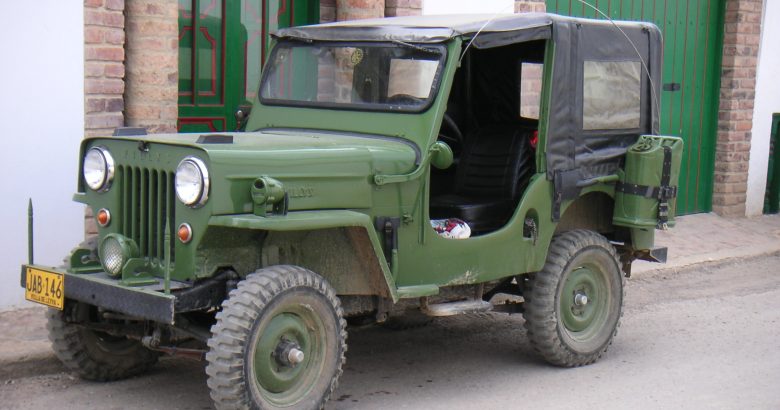
When the United States entered World War II in 1941, the automotive industry essentially switched overnight to the product of war machinery. Some manufacturers still made vehicles, however, and Willys Corporation was one of them. Willys was actually one of three companies involved in Jeep production during World War II. From 1941 until 1945, they built some 360,000 vehicles for the war effort. This was fortunate for Willys. Not only did they profit financially during this time, they also accumulated automobile production knowledge during a time when most manufacturers were shut down or building other items.
After the war, Willys was eager to jump into the production of civilian vehicles to tap into near five years of pentup demand. Not only were civilians wanting new cars, millions of returning GIs did too. After a few years to get the assembly lines rolling again, Willys introduced the Jeepster VJ-2 to the public in July 1948. The base price of $1,765 for the VJ-2 included many features that were an extra cost on competitor’s cars, such as whitewall tires, hubcaps with bright trim rings, bumper guards, dual horns, cigar lighter, wind wings, top boot and a continental spare tire with cover. It was a good looking car too.
Unfortunately, sales were slow. The Jeepster was an automobile that had close visual ties to the military Jeeps and thus was considered a little antiquated in styling. In fact, sales were so slow that many of the unsold 10,326 Jeepsters made in 1948 were retitled as 1949 models. Willys soon realized that they needed to improve the Jeepster’s competitive position with modified styling. A Jeepster enthusiast we located at Thomson in Thomson, GA, a Chrysler, Dodge, Jeep, RAM dealer, explained to us that styling was an issue but so was the price. Willys reacted quickly and released the 1949 models with a base price of just $1,495.
Plus, they added some power. Willy’s introduced a new six-cylinder engine in the VJ3-6 in 1949. It featured an L-head engine of 148.5 cid producing 72 bhp. Willys priced the six-cylinder Jeepster at $1,530. The result was that Jeepster sales picked up for a while, but production for 1949 totaled only 2,960 units. Of these, 2,307 were equipped with the four-cylinder engine and 653 with the new six.
There were two series of 1950 Jeepsters. Jeepsters carrying the new four-cylinder engine and revamped styling, including the new grill with 5 horizontal chrome bars, were designated VJ-473, while six-cylinder models were VJ-673. The total 1950 Jeepster production was 5,845 units, of which 4,066 were four-cylinder models and 1,779 were sixes. Even though production increased a bit, sales remained quite below expectations.
Poor marketing efforts and sparse advertising didn’t help to increase sales, so the decision was made to cease production of the Jeepster. Despite the 3 year production run from 1948 – 1950, the Jeepster never caught on with the general public. A total of just 19,131 Jeepsters were produced.
Image Source: wikimedia.org